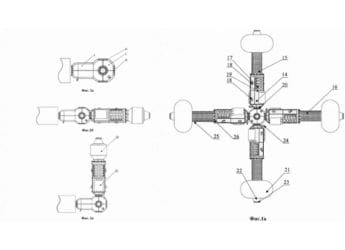- Home
- Science
- Science News
- NASA’s Chandra Telescope Observes Mysterious 'Knots' Blasting from Nearby Black Hole Jets
NASA’s Chandra Telescope Observes Mysterious 'Knots' Blasting from Nearby Black Hole Jets
NASA’s Chandra telescope reveals bright, lumpy 'knots' in Centaurus A’s black hole jet.

Photo Credit: Unsplash/Planet Volumes
Bright jet "knots" near a black hole move at varying speeds across wavelengths.
A recent study of black hole jets from NASA's Chandra X-ray Observatory has identified bright formations or "knots" in these jets, with each showing unexpected variations in speed. This analysis, led by David Bogensberger, an astrophysicist at the University of Michigan, examined decades-old Chandra data on the supermassive black hole at the heart of the Centaurus A galaxy, located around 12 million light-years from Earth.
Observations of Bright ‘Knots' Moving at Variable Speeds
The findings, which was published in The Astrophysical Journal, reveal that the knots within these jets, which emit energy from the black hole, are moving faster in X-ray observations compared to radio wavelengths. For instance, some knots recorded speeds of 94 per cent of light in the X-ray band, which exceeded the 80 per cent speed of light observed in radio wavelengths. As per the study, these discoveries provide a unique view of black hole jet mechanics, as the X-ray wavelengths reveal elements unseen in other spectral bands.
Funding Challenges for NASA's X-ray Programme
This research arises as NASA faces potential budget cuts that could affect the Chandra Observatory's operations. With the U.S. presidential election and government budget discussions ongoing, Chandra's funding future remains uncertain. Despite these challenges, the telescope—currently operating with 2024 funding levels—continues to provide crucial insights, highlighting its role in studying distant cosmic phenomena.
Centaurus A Galaxy and Black Hole Jet Mechanics
First detected in the 1800s, Centaurus A's jets were later mapped with radio telescopes in the 20th century. Of these, one jet points towards Earth, while the fainter "counterjet" extends away from it. The movement and brightness changes in Centaurus A's knots echo findings from previous observations of M87 galaxy jets, where brightness increased before dimming over time.
The study brings new insights into how magnetic fields and spin near black holes influence jet formation, offering astronomers fresh approaches for understanding such mechanisms across different galaxies. Future studies may further clarify whether the knot behaviour is due to internal jet dynamics or external forces such as interstellar materials.
Get your daily dose of tech news, reviews, and insights, in under 80 characters on Gadgets 360 Turbo. Connect with fellow tech lovers on our Forum. Follow us on X, Facebook, WhatsApp, Threads and Google News for instant updates. Catch all the action on our YouTube channel.
Related Stories
- Samsung Galaxy Unpacked 2025
- ChatGPT
- Redmi Note 14 Pro+
- iPhone 16
- Apple Vision Pro
- Oneplus 12
- OnePlus Nord CE 3 Lite 5G
- iPhone 13
- Xiaomi 14 Pro
- Oppo Find N3
- Tecno Spark Go (2023)
- Realme V30
- Best Phones Under 25000
- Samsung Galaxy S24 Series
- Cryptocurrency
- iQoo 12
- Samsung Galaxy S24 Ultra
- Giottus
- Samsung Galaxy Z Flip 5
- Apple 'Scary Fast'
- Housefull 5
- GoPro Hero 12 Black Review
- Invincible Season 2
- JioGlass
- HD Ready TV
- Laptop Under 50000
- Smartwatch Under 10000
- Latest Mobile Phones
- Compare Phones
- Huawei Nova 15
- Huawei Nova 15 Pro
- Huawei Nova 15 Ultra
- OnePlus 15R
- Realme Narzo 90x 5G
- Realme Narzo 90 5G
- Vivo S50 Pro Mini
- Vivo S50
- Asus ProArt P16
- MacBook Pro 14-inch (M5, 2025)
- Huawei MatePad 11.5 (2026)
- OnePlus Pad Go 2 (5G)
- Huawei Watch 10th Anniversary Edition
- OnePlus Watch Lite
- Acerpure Nitro Z Series 100-inch QLED TV
- Samsung 43 Inch LED Ultra HD (4K) Smart TV (UA43UE81AFULXL)
- Asus ROG Ally
- Nintendo Switch Lite
- Haier 1.6 Ton 5 Star Inverter Split AC (HSU19G-MZAID5BN-INV)
- Haier 1.6 Ton 5 Star Inverter Split AC (HSU19G-MZAIM5BN-INV)

















